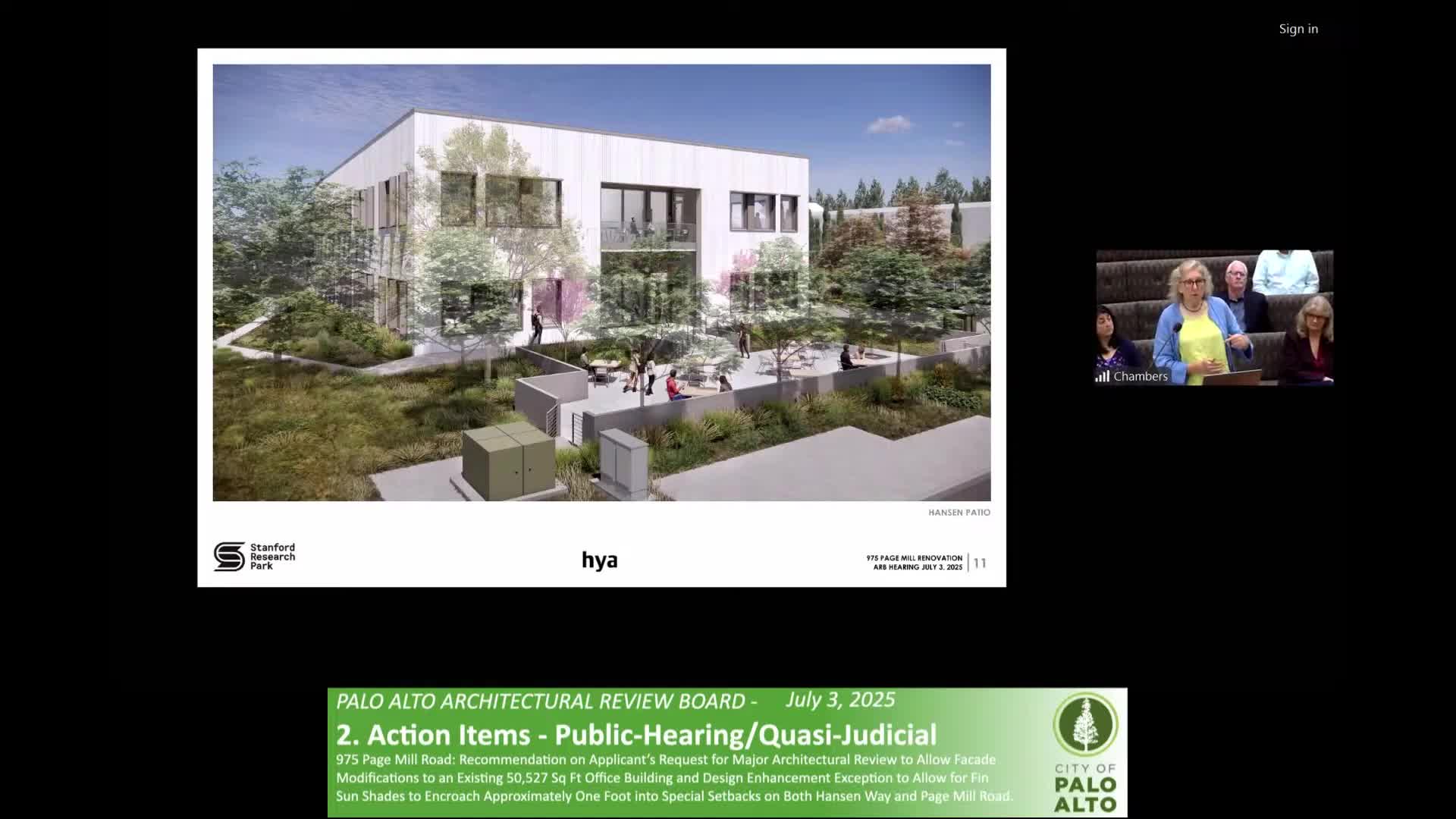Stanford announces plans for multi-tenant building and improved pedestrian access
July 04, 2025 | Palo Alto, Santa Clara County, California
This article was created by AI summarizing key points discussed. AI makes mistakes, so for full details and context, please refer to the video of the full meeting. Please report any errors so we can fix them. Report an error »

On July 3, 2025, the Palo Alto Architectural Review Board convened to discuss significant developments related to a new multi-tenant building at Stanford Research Park. The meeting highlighted the building's design and its intended role in enhancing pedestrian access and public transit use in the area.
A key focus of the discussion was the building's entrances, particularly the east side entrance on Hanson Way. This entrance is strategically located near a Stanford Marguerite shuttle drop-off point, which aims to facilitate easier access for visitors and employees. Board members noted the importance of this design in promoting a pedestrian-friendly environment, encouraging individuals to engage with the site rather than simply passing through.
Stanford's commitment to reducing vehicle trips on campus was emphasized, with plans to integrate public transit options, including nearby SamTrans and VTA bus stops. The design aims to create a welcoming plaza that invites people to spend time on-site, fostering community interaction and engagement.
The building is designed to accommodate multiple tenants, a shift from the typical single-tenant structures in the area. This approach is intended to attract smaller companies, with the second floor planned for two tenants and the ground floor designated for a single tenant. Amenities such as a café and dining area are included to serve not only the building's occupants but also individuals from surrounding buildings, promoting a sense of community within the research park.
While the potential for signage at the Hanson Way entrance was raised, it was indicated that such requests are not anticipated, suggesting a focus on maintaining a cohesive aesthetic for the building.
Overall, the discussions at the meeting underscored Stanford's ongoing efforts to enhance accessibility and community engagement within its research facilities, reflecting broader trends in urban planning that prioritize pedestrian access and public transit integration. As the project progresses, it will be essential to monitor how these developments impact the local community and the operational dynamics of the research park.
A key focus of the discussion was the building's entrances, particularly the east side entrance on Hanson Way. This entrance is strategically located near a Stanford Marguerite shuttle drop-off point, which aims to facilitate easier access for visitors and employees. Board members noted the importance of this design in promoting a pedestrian-friendly environment, encouraging individuals to engage with the site rather than simply passing through.
Stanford's commitment to reducing vehicle trips on campus was emphasized, with plans to integrate public transit options, including nearby SamTrans and VTA bus stops. The design aims to create a welcoming plaza that invites people to spend time on-site, fostering community interaction and engagement.
The building is designed to accommodate multiple tenants, a shift from the typical single-tenant structures in the area. This approach is intended to attract smaller companies, with the second floor planned for two tenants and the ground floor designated for a single tenant. Amenities such as a café and dining area are included to serve not only the building's occupants but also individuals from surrounding buildings, promoting a sense of community within the research park.
While the potential for signage at the Hanson Way entrance was raised, it was indicated that such requests are not anticipated, suggesting a focus on maintaining a cohesive aesthetic for the building.
Overall, the discussions at the meeting underscored Stanford's ongoing efforts to enhance accessibility and community engagement within its research facilities, reflecting broader trends in urban planning that prioritize pedestrian access and public transit integration. As the project progresses, it will be essential to monitor how these developments impact the local community and the operational dynamics of the research park.
View full meeting
This article is based on a recent meeting—watch the full video and explore the complete transcript for deeper insights into the discussion.
View full meeting
